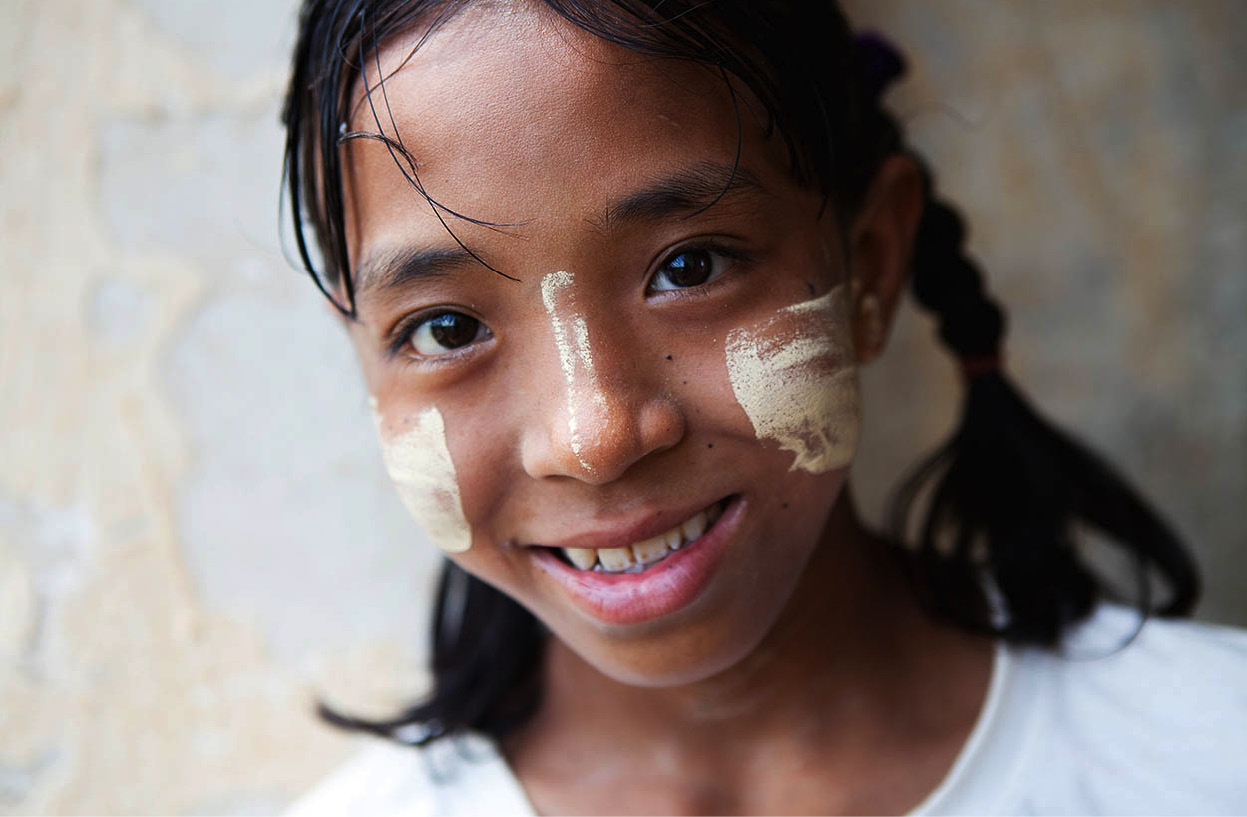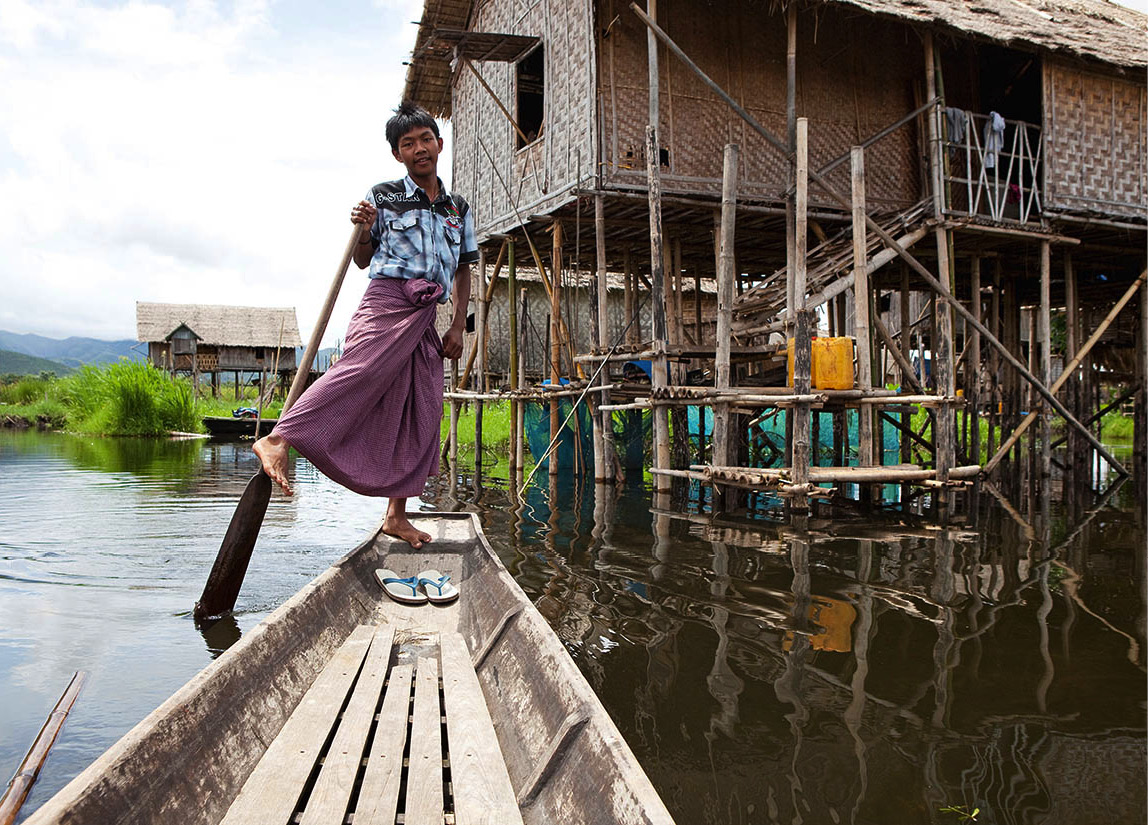A Burmese, it is often said, never feels comfortable in anything but a longyi. Since the 19th century, when it was introduced by immigrant families from southern India, this simple panel of cloth (equivalent to the the Malaysian sarong or the Indian lungi – from where it gets its name) wrapped around the waist has been the mode of dress for all Burmese, from commoners to members of the royal court.
Traditional longyis comprise rectangular lengths of printed or embroidered cloth, around 2 metres (6ft) long, which are sewn into a tube shape. When worn by men it is known as a pasoe; or as a htamein if worn by a woman.
Both look similar but are wrapped differently: men tie a knot in front, while women tie one to the side, with the knot tucked into a black waistband called a htet sint, sewn to the top of the longyi.
Simple, checked or sometimes striped patterns in subdued colours are used for men; ladies don flowery designs and bright hues. Men complete the ensemble with a Western-style shirt. Women wear a short blouse or matching top.
For special occasions such as weddings, more elegant silk longyis – or acheiks – are usually worn, accompanied by jackets and turbans for men, or in the case of women, a more elaborate, tailored top to create a suit-style outfit, with velvet-thong slippers.
The Burmese Premier, General Than Shwe, and other members of the ruling junta caused a stir in February 2011 when they appeared on national television wearing women’s acheiks and longbon headscarves – an act political observers were quick to interpret as superstition, or yadaya. Fortune-tellers have repeatedly predicted that a woman will rule Myanmar one day, and so the generals’ cross-dressing was seen as an attempt to confound the pundits and forestall the rise of NLD leader, Aung San Suu Kyi.

A young souvenir-seller in Inwa sporting thanaka on her cheeks.
Corrie Wingate/Apa Publications
– the face of Myanmar
